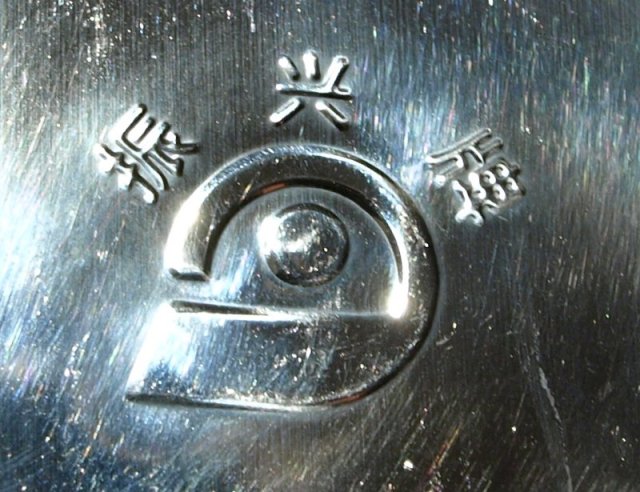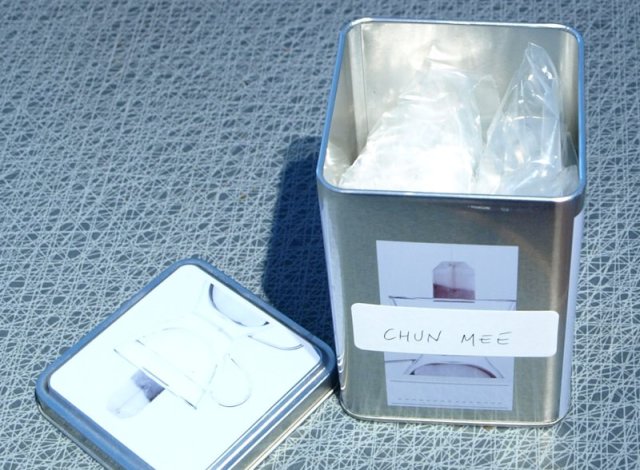
Tea caddies from Imperial Teas
As the saying goes “You can’t make good tea out of bad leaves, but you can make bad tea out of good leaves“.
I think it’s important to remember that the truth of this expression applies long before your precious leaves get to encounter hot water.
There’s little point in selecting, sourcing, and then purchasing your desired tea only to spoil it by storing it incorrectly.
The rules are quite simple, and easy enough to follow.
Tea should be stored in a cool, dry, dark, airtight condition, and away from strong odours. That’s it. With one exception.
As is so often the case, Pu-erh is a bit different. If you’re the proud owner of a good quality “raw” / sheng Pu-erh that you are allowing to mature, then you will want it exposed to some light, some humidity, and some air. It’s all terribly complex stuff. Thankfully, Mr. Daniel Lui has a jolly good article about maturing Pu-erh over at the The Chinese Tea Shop web site – link here.
I personally use metal caddies with a double lid for my best teas. The double lid consists of an inner lid with a button that sits snugly into the mouth of the caddy, and an outer lid that sits over the mouth and the inner lid.

The inner lids of double-lid tea caddies
Once upon a time, I was fortunate enough to live a short stroll away from the rather fantastic Imperial Teas, which is located in Lincoln in the UK. Amongst other things I bought there were four superb coloured, enamelled tea caddies. They hold approximately 100g of tea (depending, obviously, on the physical shape of the tea leaf), and back then cost a very reasonable £5.00.
The colouring makes it easy to grab the right tea without playing the “lid off and sniff” game – red for dark Oolong, purple for Pu-erh, green for green gunpowder, and white for whatever is the current “guest” tea of choice. Even after three years of daily use, which also included the indignity of temporary storage in a garden shed and the trauma of semi-rough handling during a cross-Europe relocation the lids still fit as well as when purchased.

Chinese tea caddy
I also have 3 other, slightly larger, double-lidded caddies, that can take a cargo of roughly 150g of tea.
These are stainless steel, and are Chinese made. I picked them up at a charity shop for the princely sum of 25 Swedish Crowns a piece, a real bargain considering their quality.
Two of them even had a little tea left in them when I bought them!
I gave them a good wash before putting my own choice of teas into them – I didn’t want any lingering odours forcing themselves onto my own leaves, especially since one of the older teas was a peppermint infused concoction that almost singed my nasal hairs.

These 3 caddies currently house loose leaf Pu-erh, the Ceylon black tea I use as a base for my Chai Masala, and my wife’s cardamom flavoured black tea.
After a bit of research and experimentation, I’ve found that a good alternative for a double lidded caddy is a more easily bought square metal caddy, with the tea placed inside a food-grade freezer bag to ensure the tea is kept out of contact with the air. I tend to use this method as a short term solution, for example if I have a small amount of a new tea that I’m trying, or for when I take smaller amounts of tea with me when I’m out and about travelling.

Single lidded caddy and freezer bag method
My tea caddies are kept safely out of harm’s way in a cupboard, which they share with my first-choice teaware.
This cupboard, a fine example of IKEA design at its best, is located on a counter top that is out of direct sunlight, and not in the proximity of the cooker, the fridge-freezer, microwave, or any food preparation area.
The only one of my teas not stored in this cupboard is a Yunnan Moonlight White tea.
I’ve read that this tea should in theory mature like a raw Pu-erh cake, so I currently store it loosely wrapped in the original paper, in a less than perfectly air-tight tin. It’s a question of keeping an eye on it, and seeing how it reacts to the way it’s being stored. Having said that it’s not a desperately pressing issue, as it’s more for drinking now than laying down for the grand-kids to quaff. Still, very interesting nonetheless…
In conclusion, then, invest a little extra time, effort, and if needs be cash into the storage of your tea.
Look after your leaves, and they in turn will reward you with many a clean, tasty cup.

This was a nice read! I definitely don’t store my lose leaf tea this way, but I would like to! Those containers are cute!
LikeLike
Thanks.
Luckily more often than not good teaware is also aesthetically pleasing, too… 🙂
LikeLike
Hi, lovely tea containers. I’ve never used the double containers maybe I should give these a try, Chloe.
https://pinkiebag.com/
LikeLike
You might have to shop around a bit to find some, but it’ll be well worth the effort. 🙂
LikeLiked by 1 person
What a unique yet unexpectedly informative blog you run! I may have to look into one of these containers, especially if I decide to splurge on a lighter and more expensive tea. 🙂 Thank you!
LikeLike
Thank you very much.
Money spent on tea and teaware is never wrong… 🙂
LikeLiked by 1 person
Pingback: Here Comes The Sun | Diary of a Northern Teaist